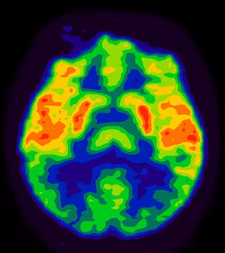How do neurons keep memory over short intervals? Our short-term memory involves many component processes. For example, it has to maintain information, bind it into items, and select parts of it when needed.
In most neural networks, a neuron can be activated by other neurons, but quickly forgets about those inputs, and quickly becomes silent again. NMDA receptors allow neurons to behave in a “sticky” manner: They remember previous inputs, and can help the neuron to stay active.
We studied patients with NMDA receptor encephalitis (Dor et al, Journal of Neuroscience 2024), who lose their NMDA receptors. We found that they could not bind information into objects, and had trouble holding attention on objects for more than a couple of seconds. This fits with specific neural models of working memory, where NMDA receptors can remember information without the neuron actively firing.
(image credits: Ge et al 2021)
